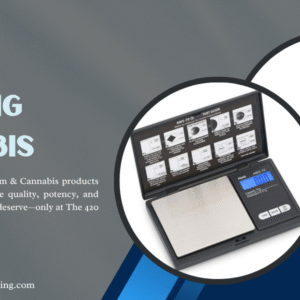Understanding risk in the workplace is essential, especially when dealing with hazards that could cause harm to employees, equipment, or the business itself. Whether you’re working on a construction site, in a chemical lab, or at a desk job, workplace safety depends heavily on being able to assess and control risks before they become serious problems.
One of the most reliable ways to evaluate workplace hazards is by analyzing two key factors: exposure and impact. These two components help you determine how likely a hazard is to cause harm and how severe that harm could be. By learning how to use these factors effectively, anyone can develop a safer work environment—whether you’re a frontline worker, a safety manager, or a business owner.
Why Understanding Risk Levels Matters
Imagine you’re working in a factory where heavy machinery is used daily. Without proper risk assessment, a small mistake—like leaving a wrench on a moving belt—could lead to a serious accident. Now, multiply this risk across various departments and dozens of machines, and the importance of a well-thought-out risk analysis becomes crystal clear.
Understanding and determining risk levels isn’t just about avoiding accidents. It’s also about building a safety culture, improving productivity, and reducing downtime. In many cases, companies that take safety seriously experience fewer injuries, happier employees, and even lower insurance premiums.
A Quick Look at the NEBOSH Course in Pakistan
For those looking to gain professional knowledge in managing workplace hazards, the NEBOSH course in Pakistan is a solid choice. This course equips participants with essential skills to identify, assess, and control risks in various work settings. Whether you’re in construction, manufacturing, or the service sector, the NEBOSH course offers a globally recognized framework for health and safety management.
Now, let’s dig into how exposure and impact help in determining risk levels at work.
What Is Exposure in Risk Assessment?
In simple terms, exposure refers to how often or how long someone is in contact with a particular hazard. Think of exposure as the “frequency” of being at risk.
Real-World Example: A Welder’s Daily Routine
Take the example of a welder who works eight hours a day in a workshop filled with metal fumes. Compared to an office worker who occasionally passes through the welding area, the welder has a much higher exposure to hazardous fumes. So, the risk level is naturally higher for the welder.
When determining exposure, consider:
- Duration – How long are employees exposed?
- Frequency – How often are they exposed?
- Number of people – How many employees are exposed?
What Is Impact in Risk Assessment?
Impact refers to the severity of the consequences if a hazard actually causes harm. Some hazards may happen often but result in minor issues, while others might be rare but deadly.
Anecdote: A Slippery Staircase
Consider an employee slipping on a wet staircase. Maybe the fall only results in a bruise, but what if someone hits their head or breaks a leg? The impact in that case is high—even if such accidents are rare.
Assessing impact includes:
- Type of injury – Is it minor, moderate, or severe?
- Effect on operations – Will it shut down production?
- Reputation damage – Could it affect the company’s image?
Step-by-Step Guide to Determining Risk Levels
Now that we’ve defined exposure and impact, let’s go through a simple step-by-step process you can use to assess risk levels effectively.
Step 1: Identify the Hazard
Before you can evaluate anything, you need to know what you’re dealing with. Look around your workplace and identify potential hazards like:
- Chemicals
- Noise
- Machinery
- Electrical systems
- Slippery surfaces
Step 2: Evaluate Exposure
Ask the following:
- How many employees come into contact with this hazard?
- How often does this happen?
- How long does the exposure last?
Step 3: Evaluate Impact
Now determine the severity of consequences if the hazard leads to an incident:
- Could someone be seriously injured or even killed?
- Will this affect one person or many?
- Could this halt operations?
Step 4: Use a Risk Matrix
A risk matrix is a handy tool that helps you combine exposure and impact to get a clear picture of the overall risk level. It often looks like a grid with:
- Low to High Exposure on one side
- Low to High Impact on the other
This way, a hazard that has high exposure and high impact would be labeled as a critical risk, requiring immediate action.
Step 5: Prioritize and Control
Once you’ve determined the risk levels, focus on controlling them in order of priority:
- Eliminate the hazard if possible
- Substitute with something less dangerous
- Use engineering controls (e.g., machine guards)
- Apply administrative controls (e.g., training, signs)
- Provide Personal Protective Equipment (PPE)
Why Exposure and Impact Must Work Together
Relying on only one factor—either exposure or impact—can lead to poor judgment. A hazard with low exposure but catastrophic impact (like a chemical spill) may not be frequent, but it still needs to be taken very seriously.
Similarly, a hazard with high exposure but low impact (like frequent paper cuts) might seem less urgent but could accumulate into productivity losses or infection risks over time.
Combining both provides a complete picture.
A Personal Story: The Forklift Incident
A few years ago, a warehouse supervisor ignored multiple reports of workers operating forklifts too fast in tight spaces. Although the exposure was high—forklifts zipped through the aisles all day—the impact seemed low since no accidents had occurred yet.
That changed quickly.
One day, a forklift knocked over a heavy shelf, injuring two workers and causing thousands of dollars in damages. This accident taught the team an important lesson: ignoring frequent exposure, even if impact seems manageable, is a risky gamble.
Turning Risk Assessments into Action
Conducting a risk assessment is only the beginning. The real value lies in taking action. Once risks are identified using exposure and impact, companies need to create a risk register and assign responsibilities for reducing these risks.
You might find that something as simple as improving ventilation or marking hazard zones can drastically reduce risk. Small changes can have big impacts when guided by good data.
The Role of Safety Training in Risk Awareness
A strong understanding of risk comes not just from experience, but also from quality training. Investing in workplace safety training helps employees recognize hazards and take ownership of safety protocols. This is where globally recognized certifications, like the NEBOSH safety course in Pakistan, play a vital role.
Such training gives you both the practical tools and the legal knowledge to protect yourself and others at work.
Final Thoughts: Why Risk Levels Should Never Be an Afterthought
Determining risk levels using exposure and impact isn’t about filling out a checklist—it’s about protecting lives, equipment, and your business’s future. When you take the time to assess risks properly, you’re making a long-term investment in safety and efficiency.
So next time you’re in your workplace, take a moment to ask:
- Who’s exposed to risk here?
- What could happen if something goes wrong?
Once you start asking these questions regularly, you’ll not only improve safety—you’ll create a culture that values human well-being above all.
By understanding these simple but powerful concepts, you’re already taking the first step toward a safer, smarter workplace.






